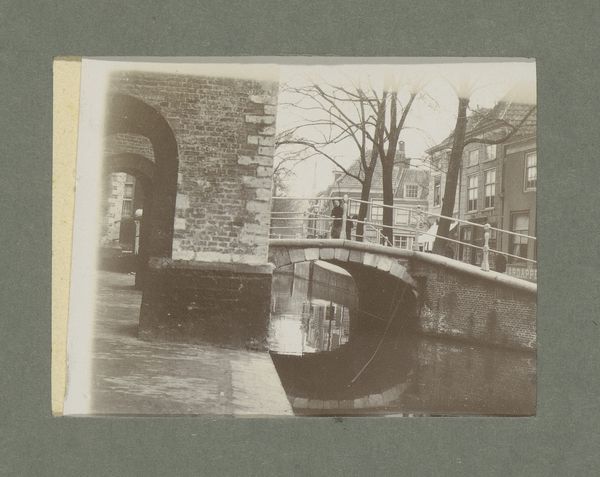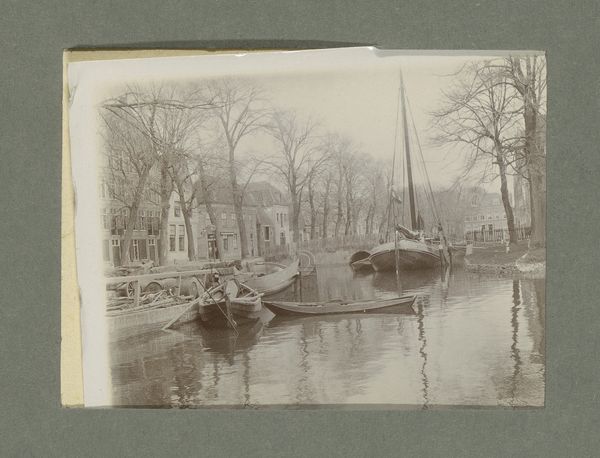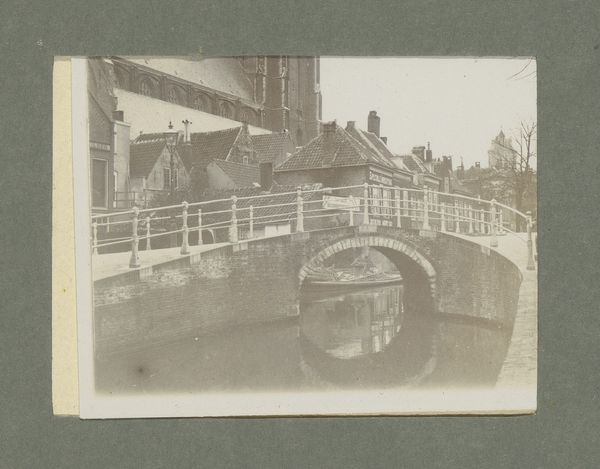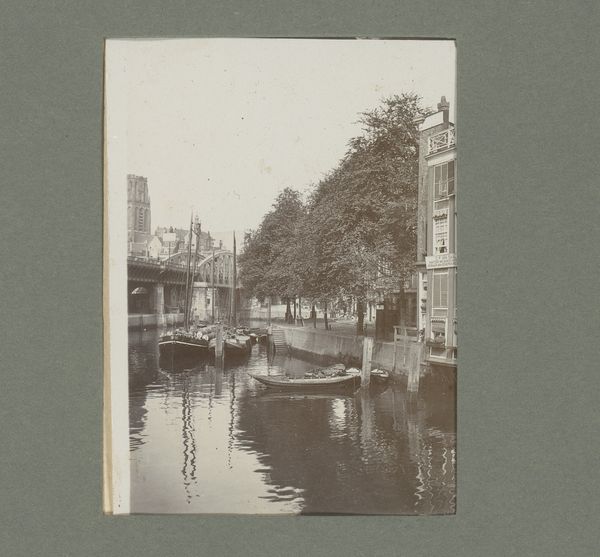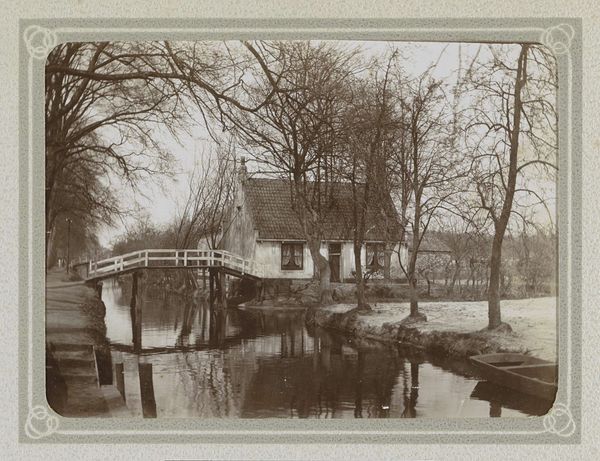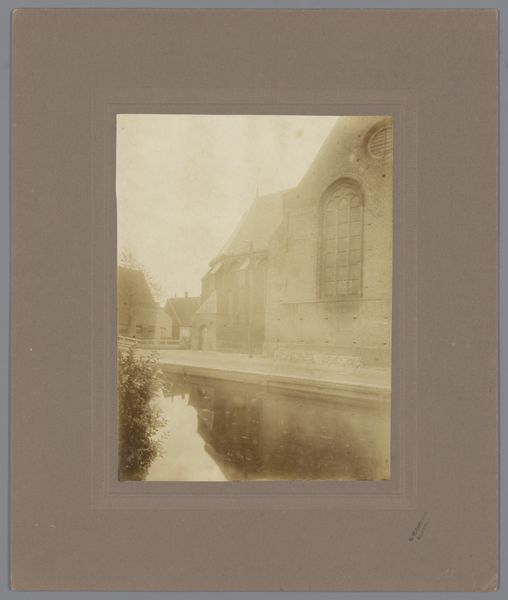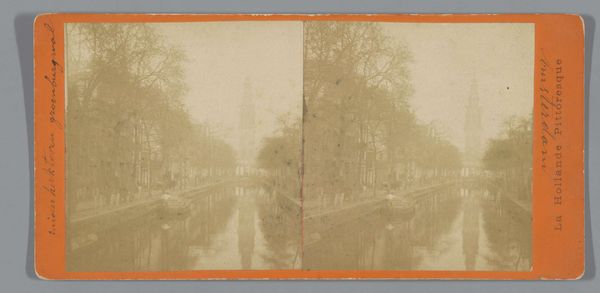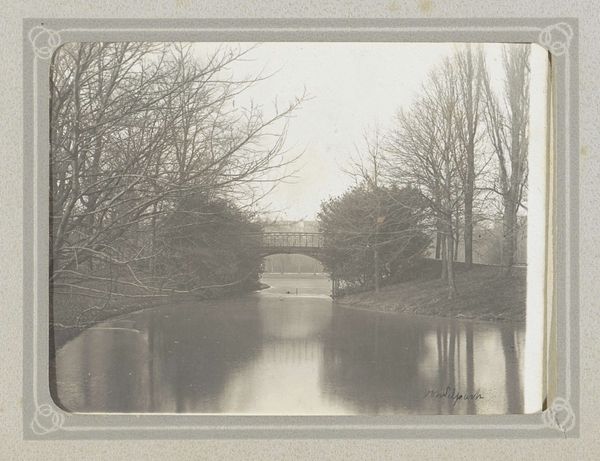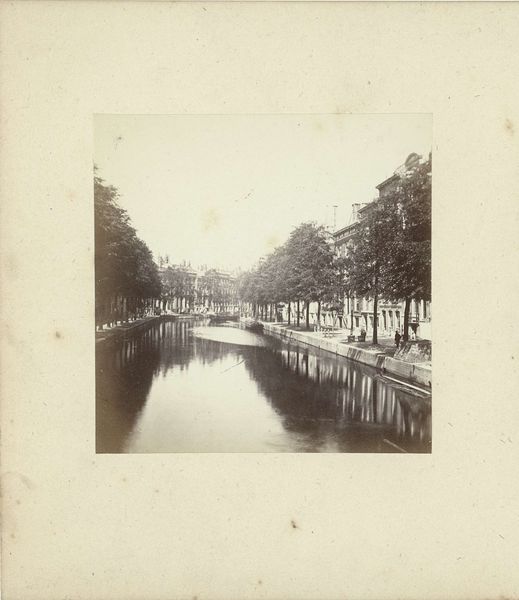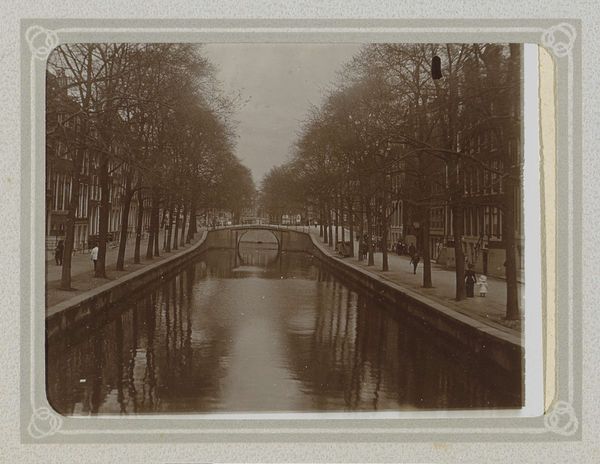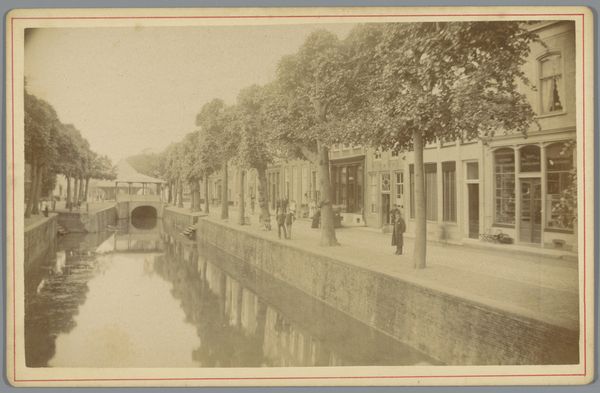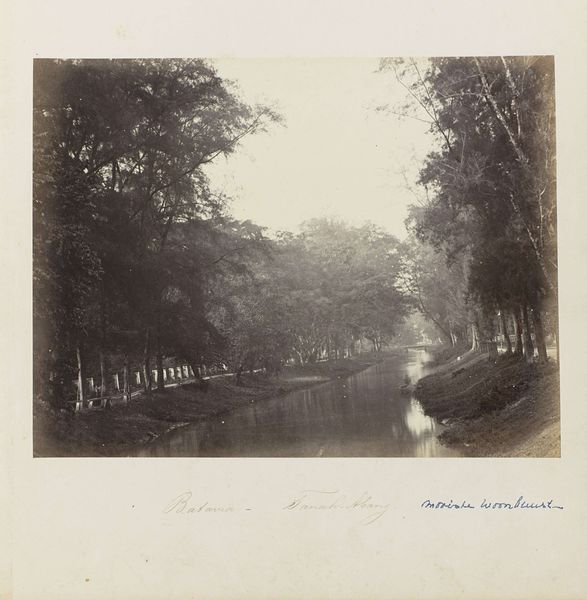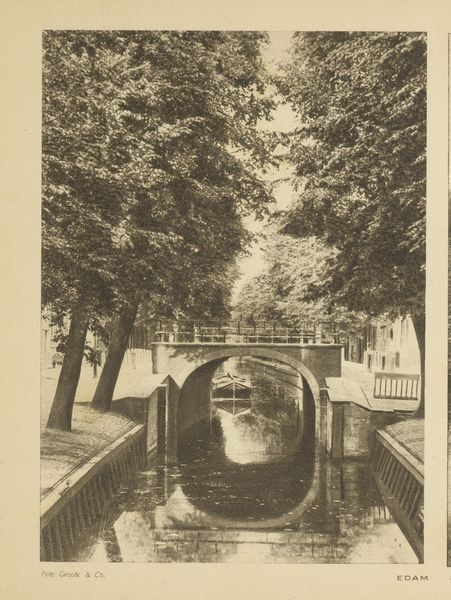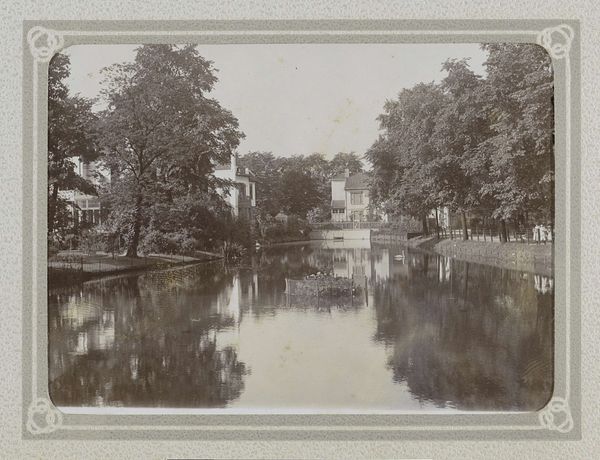
Dimensions: height 74 mm, width 99 mm
Copyright: Rijks Museum: Open Domain
Editor: Here we have G. Hidderley's "Gezicht op een brug over een gracht", a gelatin silver print, placing it somewhere between 1920 and 1940. I'm really drawn to the tranquility of this piece; the reflections in the water are almost dreamlike. What do you see in this work? Curator: The reflections are indeed captivating, aren’t they? Looking at this photograph, I see more than just a cityscape; I see a reflection of societal values of the time. The quiet stillness contrasts sharply with the interwar period in which this photograph was created. Considering the historical context—the rise of industrialization and the looming threat of conflict—what do you think Hidderley might be saying by choosing this specific view, at this moment in history? Editor: Maybe a yearning for a simpler time, away from the noise and anxiety? Curator: Precisely. And how does the photographic medium itself play into that yearning? Think about the accessibility of photography versus painting at the time, and its implications for representation. Does it democratize the art world? Does it show us that there is beauty everywhere or only where we point the lens? Editor: That's a good point. Photography made art more accessible, but it's also inherently selective, as you mentioned. I suppose Hidderley chose to frame this canal scene, possibly to create a commentary. Curator: Yes, and what are the possible underlying factors, considering the economic and societal shifts impacting artistic communities at the time? Editor: Wow, that's given me a lot to consider. It's fascinating how a simple photograph can be interpreted on so many different levels. Curator: Absolutely! And the power of art lies in its ability to provoke these conversations.
Comments
No comments
Be the first to comment and join the conversation on the ultimate creative platform.
